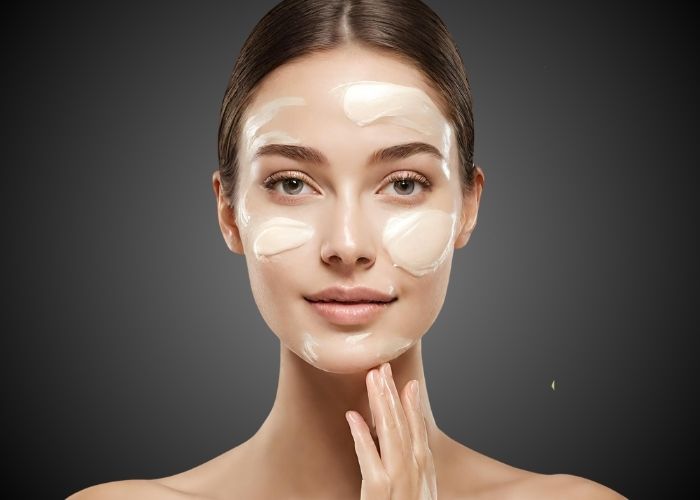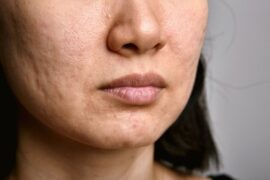As someone with oily skin, it can be difficult to find the right skin care routine that works for you. Oily skin can make you feel self-conscious because of the excess oil and shine. However, with the right skin care routine, you can control oil production and achieve a healthy, radiant complexion.
In this article, we will discuss the ultimate 8 skin care routine for oily skin that can help you take control of your skin.
8 Step-by-Step Skin Care Routine for Oily Skin
Step 1: Cleanse with a Gel Cleanser
The first step in a skin care routine for oily skin is to cleanse your face with a gentle gel cleanser. These cleansers effectively remove oil, dirt, and makeup without stripping the skin of its natural oils.
Look for products that can help unclog pores and prevent breakouts. Use a small amount of cleanser to massage your face in circular motions and rinse off with lukewarm water.
Step 2: Use a Toner
After cleansing, use a toner to restore the skin’s pH balance and remove any leftover impurities. Toners can help reduce the appearance of pores and control excess oil production.
Look for toners that contain witch hazel, tea tree oil, or rosewater, which have astringent properties that can tighten and firm the skin. Use a cotton pad to apply the toner onto your face, avoiding the eye area.
Step 3: Apply a Serum
Serums are lightweight products that deliver high concentrations of active ingredients to the skin. For oily skin, look for serums that contain vitamin C, and niacinamide which can help regulate oil production and prevent breakouts.
Serums can also help brighten and hydrate the skin. Apply a few drops of serum onto your face and neck and gently massage it in.
Step 4: Use an Oil-Free Moisturizer
Moisturizer is an essential step in a skin care routine for oily skin because it helps hydrate the skin and control oil production. Look for oil-free, lightweight moisturizers that contain ingredients like glycerin, ceramides, or dimethicone, which can help hydrate the skin without clogging pores.
Apply a dime-sized amount of moisturizer onto your face and neck, gently massaging it in.
Step 5: Apply Sunscreen
Sunscreen is crucial for all skin types, including oily skin. Look for oil-free or mattifying sunscreens that are specially designed for acne-prone skin.
Sunscreens with zinc oxide or titanium dioxide are good options because they don’t clog pores. Apply sunscreen to your face and neck every morning, even on cloudy days.
Step 6: Use a Weekly Exfoliant
Exfoliating once a week can help remove dead skin cells and unclog pores. Look for gentle exfoliants and avoid using physical exfoliants like scrubs, as they can irritate the skin and cause more oil production.
Gently massage the exfoliant onto your skin and rinse off with lukewarm water.
Step 7: Apply a Weekly Mask
Applying a weekly mask can help purify and detoxify the skin. Look for clay masks that contain bentonite or kaolin, which can help absorb excess oil and impurities from the skin.
Apply the mask onto your face and leave it on for 15-20 minutes, then rinse it off with lukewarm water.
Step 8: Use Oil-Blotting Sheets
Throughout the day, oil production on your face may increase, causing it to look shiny and greasy. Oil-blotting sheets are a quick and easy solution to combat excess oil.
Simply press the sheet onto your face, focusing on oily areas like the forehead, nose, and chin. Don’t rub or press too hard, as this can irritate the skin.
Additional tips:
In addition to following a proper skin care routine, there are several additional tips you can incorporate into your daily routine to help prevent and control oily skin. These simple steps can make a big difference in the overall health and appearance of your skin:
Wash your face twice a day:
Cleansing your face in the morning and evening helps remove excess oil and impurities. Avoid over-washing, as this can strip the skin of its natural oils, leading to increased oil production.
Use oil-absorbing products:
Look for oil-free or mattifying products such as primers, foundations, and powders. These can help control shine and keep your skin looking fresh throughout the day.
Avoid touching your face:
Your hands come into contact with various surfaces throughout the day, picking up dirt and bacteria. Touching your face can transfer these impurities to your skin, leading to clogged pores and breakouts.
Be mindful of your diet:
While diet alone cannot directly cause oily skin, certain foods can trigger an increase in oil production. Limit your intake of greasy, fried, and sugary foods, and opt for a balanced diet rich in fruits, vegetables, and whole grains.
Stay hydrated:
Drinking an adequate amount of water throughout the day helps keep your skin hydrated from within. Dehydration can actually stimulate oil production, so make sure to drink enough water to keep your skin balanced and moisturized.
Avoid over-exfoliating:
While exfoliation is important to get rid of oily skin, overdoing it can actually irritate the skin and trigger more oil production. Stick to exfoliating once or twice a week to remove dead skin cells and unclog pores without causing irritation.
Use oil-free makeup removers:
When removing makeup, choose oil-free or micellar water-based removers. These products effectively remove makeup without leaving behind any greasy residue.
Don’t skip moisturizer:
Many people with oily skin make the mistake of skipping moisturizer, believing it will make their skin even more oily. However, skipping moisturizer can actually cause your skin to produce more oil to compensate for the lack of moisture. Opt for oil-free, lightweight moisturizers that hydrate without clogging pores.
Manage stress:
Stress can have a negative impact on your skin, triggering oil production and breakouts. Incorporate stress-management techniques into your daily routine, such as meditation, exercise, or engaging in activities you enjoy.
Avoid hot water:
When cleansing your face or showering, use lukewarm water instead of hot water. Hot water can strip the skin of its natural oils, leading to increased oil production.
Blot, don’t wipe:
If you notice excess oil on your face during the day, resist the urge to wipe it away with your hands or a towel. Instead, gently blot the oil using oil-absorbing sheets or tissues to avoid spreading bacteria and irritating the skin.
Use a non-abrasive cloth:
When drying your face, opt for a soft, non-abrasive cloth or towel to pat your skin dry. Rough towels can cause irritation and stimulate oil production.
Get enough sleep:
Lack of sleep can contribute to an imbalance in hormones that regulate oil production. Aim for 7-8 hours of quality sleep each night to allow your body to restore and rebalance itself, promoting healthier skin.
In conclusion, a skin care routine for oily skin can help control oil production and prevent breakouts, resulting in a healthy and radiant complexion. Remember to cleanse, tone, and moisturize twice a day and use a weekly exfoliant and mask to keep your skin clear and bright.
With these eight steps, you can achieve the best skin care routine for oily skin and achieve your skin care goals.










